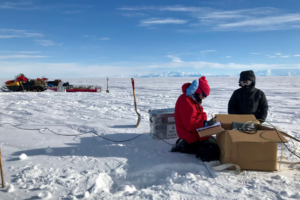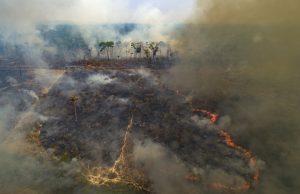March 2011. The Arab Spring was in full force. The Libyan Civil War intensifying. And then, on the 11th day of the month, the fourth most powerful earthquake ever recorded hit off the coast of Japan, generating a tsunami that ended up causing thousands of casualties. But news coverage quickly focused on a new threat: a potential meltdown at the Fukushima Daiichi Nuclear Power Plant, which had been directly in the tsunami’s path.
As three core meltdowns led to a release of nuclear material second only to that of Chernobyl, 140,000 residents within 12 miles of the plant were evacuated for fear of radiation exposure. All of Japan’s nuclear plants were shut down (though some have since come back online), and countries as far away as Germany took turns bashing nuclear power.
But, seven years on, the true health impact of the Fukushima disaster on former residents has been very different from what everyone feared:
THE FUKUSHIMA DISASTER REDUCED LIFE EXPECTANCY FAR MORE DUE TO INCREASED DIABETES RATES THAN DUE TO CANCER CAUSED BY RADIATION — BY A FACTOR OF SIX.
And, among the elderly, diabetes trumps radiation as a threat to life expectancy by a factor of 33.
That’s according to a September 2017 study using six years of public health checkup data from Minamisoma and Soma, two towns closest to the power plant. To be fair, the reduction in life expectancy is small in both cases — 0.04 years because of diabetes and 0.007 years because of radiation for the general population — but the gap is substantial. According to the researchers, it not only speaks to the fact that the negative effects of radiation were mercifully small — a meta-analysis by a U.N. agency of dozens of studies found “no deterministic health effects due to radiation exposure … and none are expected” — but also shows the importance of taking into account indirect health issues caused by lifestyle disruption following a major disaster.
“The main health effect of the nuclear disaster [has been] the social disruption” caused by the evacuation, says study author Dr. Masaharu Tsubokura from the Department of Radiation Protection at Minamisoma Municipal General Hospital in Fukushima. He and several other researchers have published multiple papers on the disaster’s secondary health effects, identifying increasing rates and severity of illnesses such as diabetes, high blood pressure, obesity and depression.
The population of Minamisoma City, Tsubokura says, fell from 70,000 before the disaster to just 8,000 and has since recovered to just above 50,000. Those who remain are overwhelmingly elderly, with family breakup, job losses and community disruption leading to widespread social isolation. Many are still living in temporary housing. Other studies have shown that for vulnerable residents such as the elderly, the forced emergency evacuations were far more harmful than staying put, with conditions of cold, inadequate accommodation and uncertain access to food and medicines. Twenty-five percent of elderly residents died within 90 days of the evacuation, notes Tsubokura.
Indeed, similar effects have been found in previous research, says Dr. Vivian Fonseca, assistant dean for clinical research at Tulane University in New Orleans, who conducted research following Hurricane Katrina to show that diabetes management “goes haywire” for those already with the disease when a major disaster strikes. Conditions such as diabetes are very susceptible to lifestyle changes like diet and exercise, let alone the devastating social shock of a mass evacuation. And recent research across medicine has increasingly expressed the importance of the social determinants of human health, as well as the linkages between physical and mental health.
Clear conclusions are difficult to reach, though. “The health impacts of the disaster have been really complex,” and we don’t yet know the “mediating factor” — was the evacuation mainly to blame, or stress or social isolation since? — explains Claire Leppold, a Ph.D. candidate at the University of Edinburgh who’s researching the social determinants of health in Fukushima. And indeed, it’s incredibly difficult to get comparable data from before and after. “There’s a lot of unrecognized diabetes out there,” says Fonseca, leading to “a degree of bias in the statistics” when residents are meticulously tested after the disaster.
That said, the same over-screening effects apply to studying radiation, with thyroid nodules — and thyroid cancer — often going undetected for years, notes Leppold. While Fonseca is clear that conditions such as diabetes worsen in the case of disaster, he suggests that boiling that down to specific numbers of lost life expectancy in years “is a huge extrapolation” of what can be reliably proved.
Nevertheless, it’s clear that the biggest threat from major disasters isn’t always the most direct. Researchers in Fukushima hope that the conclusions will lead to the development of better evacuation policy and disaster preparedness. Disasters, big and small, “occur all the time,” says Fonseca, and people with diabetes and other lifestyle illnesses “need to be ready for it.”




